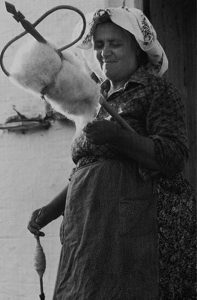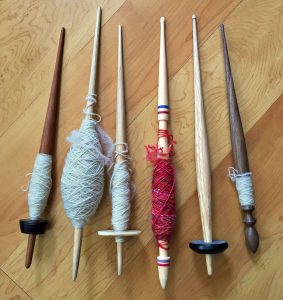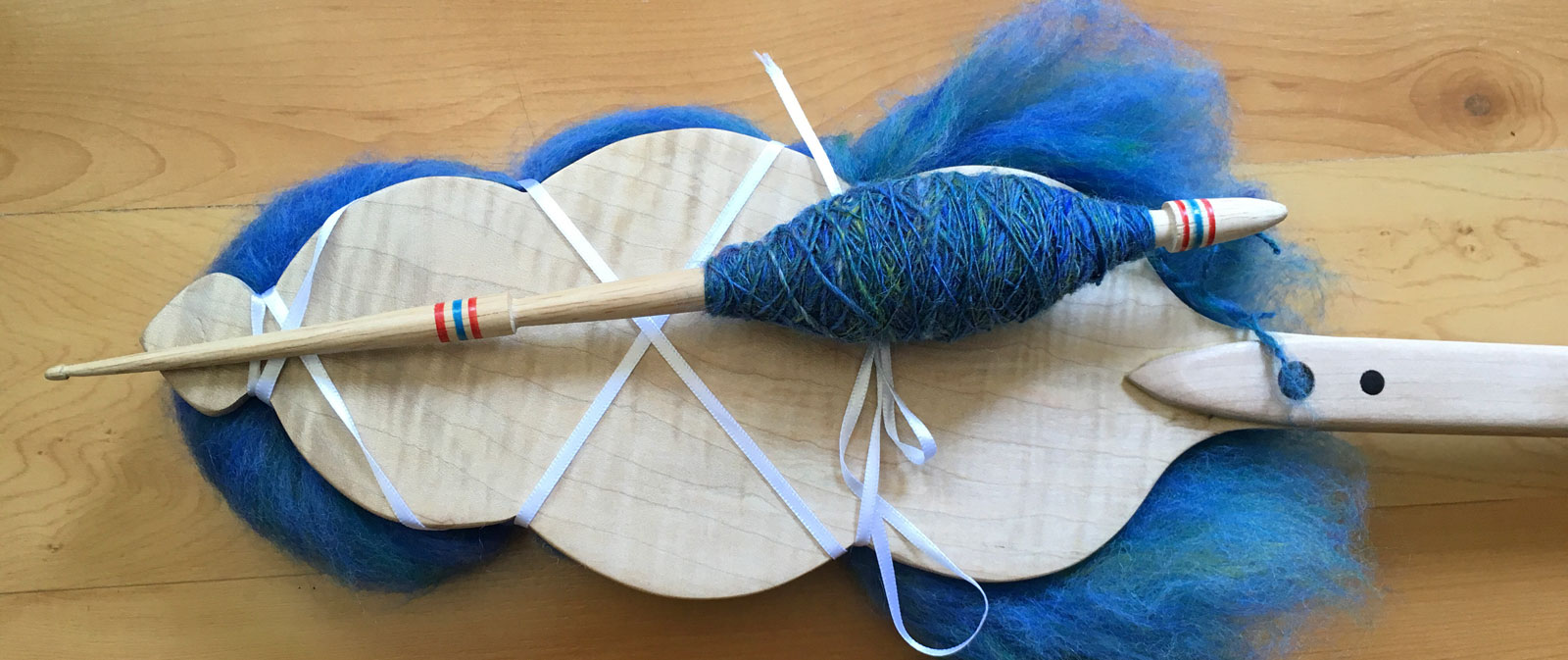
Last summer I taught myself to spin using a spindle and belt distaff. This method was used in Europe during the Middle Ages and can still be found in Eastern Europe.
The advantage of spinning with a spindle is that it’s very portable – you can do it while walking around, standing in line, sitting or standing. A distaff keeps your fibre clean and out of the way. If you need to do something else while you’re spinning (chase a fox away from your lambs or use the bank machine for example), you don’t have to put your fibre away.
Spindles used for this type of spinning are quite different from our modern top or bottom whorl spindles. They have very small, light, compact whorls which are usually removable. Some spindles have no whorl at all, just a slightly thicker shaft in places. The small whorl makes the spindle spin very fast, but not for a long time. The whorl is removable because once you have enough thread on your spindle you can take off the whorl. The cop acts as a whorl itself and you can get more thread on your spindle without it being too heavy.

There are several traditional ways to spin with a spindle and distaff. A spindle of this style usually does not have a hook at the top.
- You can secure the thread with a half hitch which allows you to let go of the spindle while it’s turning. Spindles of this type sometimes have a bulb at the top which helps to make sure the half hitch stays in place. This is the way I usually spin. I learned from a video from Serbia and it seems to be popular in recent and modern Eastern Europe.
- You can also spin while holding the spindle all the time. This is called “in hand” spinning. If you are skilled you can let go of the spindle for short periods while it’s turning. See Kathelyne Aaradyn’s blog for this technique.
- Some spindles have a spiral groove at the top. The thread stays in the groove allowing you to let go of the spindle some of the time.
Here’s a video of me spinning at the Osgoode Medieval Festival where our guild was demonstrating. Ann was learning how to spin this way. You can see how she puts the distaff in her belt.
You can also see how I change my spindle hand position as my arm gets farther out. When my hand is close to the distaff I’m using a hold like you would with a support spindle. When my arm is outstretched I switch to an overhand method. The thread comes down between my index and third fingers and I spin the spindle like a top.
Another video. Spinning on the dock at the cottage.
Video references:
- This is the video I studied the most while learning: Spinning in Serbia, 2012
- Josephin Waltin in Sweden has a lovely blog with videos
- Spinning with a distaff in Portugal
- Luca Costigliolo demonstrates traditional spinning from Italy
- A Romanian woman demonstrating a very interesting in hand spinning method. English subtitles
- Lois Swales talks about medieval spindles and how they were used. Top whorl? Bottom whorl?
- Spinning both flax and wool using spindle and distaff in Croatia, plus a lot of village life. Accordions, dancing, farm work…
- Kathelyne Aaradyn’s blog on 15th century spinning
There’s a great Facebook group called The Evangelical Church of Distaff Spinning.



